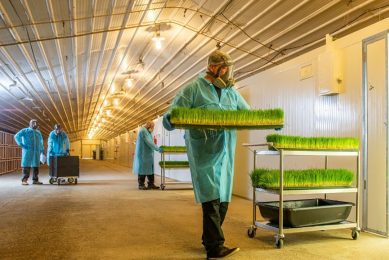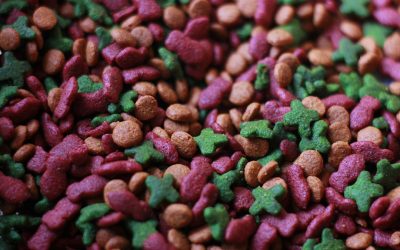By: George Collings
Businesses worldwide face enormous challenges with the current financial crisis and their continued attempts to improve consumer confidence. Additional burdens of product failure and/or product recalls further reduce the viability of a business and severely affect the confidence of its consumers. Product recalls erode consumer confidence in the brand, the manufacturer and potentially the overall product segment. In the pet food industry, consumers have had hundreds of food and treat options available to them, choosing a specific product for its nutrition, ingredients, flavours or other product attributes to best meet the needs of their family pet. Beyond the basic product attributes and performance, the quality is an expectation of the consumer. Basically, they expect the manufacturer to provide what they say they are providing. Consumers build their confidence in a brand or a company over time related to performance. In some respects, it is like sitting in a chair. When you happen to sit in a chair that breaks underneath you, you are less likely to sit in the next chair with as much confidence. Over time, sitting in hundreds of chairs, your confidence returns. If the ‘fall’ caused excessive damage or even death, you might be reluctant to sit in a chair for a long time.
List of recalls
The pet food industry has faced several product issues over the last ten years which have led to multiple recalls throughout all sales channels. In 1999, aflatoxins in pet food contributed to the deaths of approximately 25 dogs with many more dogs becoming ill. Over one million bags of a corn-based dry dog food were recalled. In 2005, the death of approximately 100 dogs was connected to the use of mouldy corn with aflatoxin in dry extruded products sold worldwide. In 2007, the FDA learned that some pet foods were sickening and causing death in cats and dogs. They found that a contaminant (melamine) was being added into vegetable proteins in China and used as ingredients in pet foods and treats. This led to recalls of over 150 brands. Thousands of dogs and cats suffered kidney problems or died eating the melamine containing foods. The source was traced back to two now-defunct Chinese companies. These two companies plus a USA company were indicted by a federal grand jury for their involvement in importing contaminated ingredients.
In 2008, a Salmonella problem in dry pet foods led one pet food company to close many plants because the plants were not built to adequately control Salmonella and could not be retrofitted well. In early 2009, a major recall occurred with peanut butter containing Salmonella that led to over 2500 food brand recalls including over 25 brands of pet food. These five examples of recalls had major visibility in the media and have led to erosion in consumer confidence. Certainly, there were smaller, less visible recalls within the industry that have not led to animal health concerns. Most importantly, there has also been hundreds of thousands of tonnes of pet foods and treats that have performed just as expected leading to great consumer confidence.
Effect on the marketplace
The question is ‘What effect do recalls of this magnitude have in the marketplace?’ I believe the recalls lead to a decline in consumer confidence and a reduction in confidence in manufacturing and quality systems by retailers and distributors. Recalls also have an effect on increasing regulatory involvement and oversight and ultimately, an increase in new regulations and manufacturing procedures. Because of that, quality focus is stepped up within the effected company(s) and more attention is given to the portion of the business involved in the product failure. Lastly, recalls potentially decrease sales and have a corresponding affect upon business performance and staffing.
Recalls pull products from shelves and distribution centres. They cause everyone involved to be concerned. To quote one person I know who managed a recall: ‘I felt like I had a pit in my stomach all the time.’ Costs of pulling products, testing and destroying add to the financial impact. There are also potential lawsuits, veterinary medical bills, plant inspections and regulatory fines which further hurt financial performance. All companies strive to produce products with speed, efficiency and quality. Sometimes, speed and efficiency to market appear in direct opposition to quality systems. The more a company operates on ‘just-in-time’ manufacturing and delivery, the more difficult it is to have quality systems that can keep up. It is not impossible; just more difficult. Pressure for operations to reduce cost through efficiencies and ingredient suppliers increases the pressure on quality systems as well. Again, not impossible: just more difficult.
Quality assurance
When you say recalls, probably the first word that comes into your mind is quality. Quality systems are designed to assure good efficacious products to the consumer or client. These control mechanisms are developed as a cross-functional approach covering all activities from product design, research, development, production, installation, servicing and documentation. It includes the quality systems involved in the raw materials, production equipment, management, production methods, laboratory design and methods and overall inspection processes. As quality systems are technically focused, it is important to remember that technical support does three major things for a business: it helps maintain the business, it helps grow the business share and it helps build new business. Quality systems don’t generally grow the business share or build a new business, but they are paramount to the maintaining of the business. But with good quality systems in place, why do product failures and hence product recalls still occur? Here are some of the reasons:
– The business has not established robust quality specifications and has not tested them properly to determine ‘points of failure.’
– The business does not follow quality specifications and guidelines and purchases ingredients or manufactures products that do not meet specification.
– The business looks for lower ingredient prices and expands purchasing beyond locations where regular inspections and oversight can occur.
– Unforeseen contaminations occur beyond the control of the business.Who would have ever expected that peanut butter could be infected with Salmonella? The retail companies with products using Salmonella contaminated peanut butter depended upon the companies making their products to have testing in place to prevent this from happening. The manufacturers of final retail products depended upon the ingredient supplier to have good quality systems in place as well. All have learned that they must have their own quality procedures to protect their own companies and brand identities. Who would have ever expected melamine contamination? Stopping a future melamine contamination where a wilful decision was made to deceive offers a difficult challenge, but certainly buying from reputable suppliers is critical to good quality.
Consumer responses
We live in societies where 25% of the population is very concerned with ‘health and wellness’. This percentage is increasing rapidly and has driven the growth of green, natural and organic foods. The consumer believes that organic foods or natural foods are inherently better for themselves and their pets. They believe that some highly processed foods have little nutritional value and possibly contain components that are negative to overall health. The reaction to product failures in the market place leads to:
– Increased concern by the consumer in the ability of the brand to provide quality.
– Decreased level of trust by some consumers in the brand or company. Distrust is very high when major health issues or death has occurred.
– Changes in purchasing by the consumer towards other brands not involved with the recall.
Changes in purchasing by the consumer to better, higher quality products. This has driven some pet food consumers to buy organic pet foods or consider home-made pet food formulas.
Rebuilding trust has been shown to be a key market trend for food businesses for 2009. It is crucial for business success, consumer confidence and overall economic recovery. Regaining trust is a difficult process depending upon the severity of the problem. For instance, the large USA automotive manufacturers took a long time to fix their quality problems. When they finally did, they woke up to find that many consumers had lost confidence/trust in their products? This is changing, but it has taken many years. About 20 years ago, there was a major Salmonella outbreak in eggs in Great Britain. Consumption of eggs declined quickly and dramatically, but over time, that health concern has passed and eggs are not viewed as a health concern. A major recall occurred in Great Britain in 2005 with chilli powder with a potentially carcinogenic colour. Over 600 foods were pulled from the shelves with recalls leading to a loss of millions of euros. Today, the impact of that recall has been minimised, but still 12% of adults are less confident about the safety of food. All of these examples show we should take consumer trust seriously.
What to do?
When consumer confidence or consumer trust has been damaged, the company and industry should quickly focus on several things: Movequicklyto resolve the problems with consumers and retailers. Don’t try to hide the fact that a failure has occurred. Covering up the problem can only lead to large legal problems and stronger regulatory consequences. Improve quality systems if necessary. Don’t let quality be minimised. Help quality personnel see the importance of their role in the business. Quality groups should not burden the business, but should see themselves as critical to maintain the long-term success of the business. Enforce better quality systems and guidelines. Make it a goal to maintain your business daily. Strive for good quality. Review your quality standards on a regular basis.
Use reputable ingredient suppliers. Build better relationships with your suppliers or manufacturers so you can work together on any issue.
Offer alternative products to the consumer that are seen as higher quality or focus on health. Show the consumer that you are just as concerned as they are about their family pets. Elevate your messages to the consumer on quality and your company’s approach to bringing them the health and performance products that are really wanted in today’s market.
Use industry associations to help each other and build consumer confidence. A quality recall by one company affects all companies and all brands at some level. And lastly, work with regulatory groups to build consumer confidence with regulatory changes that make sense and are reasonable.
Unfortunately, the damage of a recall has destroyed the viability of some companies. Over 15 years ago, one pet food company with a high quality image of natural ingredients recalled over half their inventory. They did not recover. Consumers of their products found other companies to provide the same benefits. When I was a teenager, I worked for a retail group that taught their employees ‘the customer is always right.’ We all know that is not always true, but we have to act like consumers are right and that we are listening. Consumers will respond to companies that care for them and their trust/confidence will return.
Source: Feed Mix magazine Volume 17. No 2
About the author: Dr George Collings is General Manager of Collings Nutrition Solutions focusing on new nutrition technology and innovation, business and product development for multiple animal/pet nutrition markets. Dr Collings has over 30 years experience and is board certified in animal and human nutrition.Contact: gcollings@cnutritionsolutions.com Website: www.cnutritionsolutions.com












